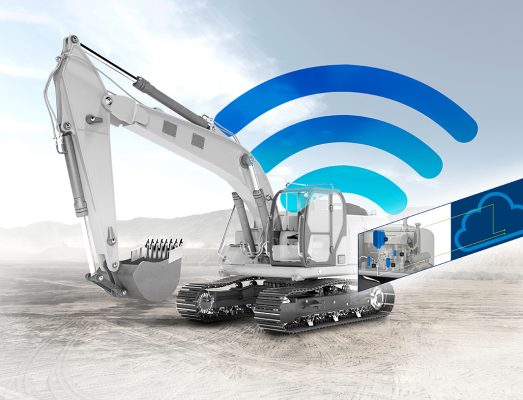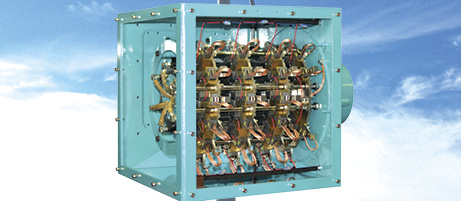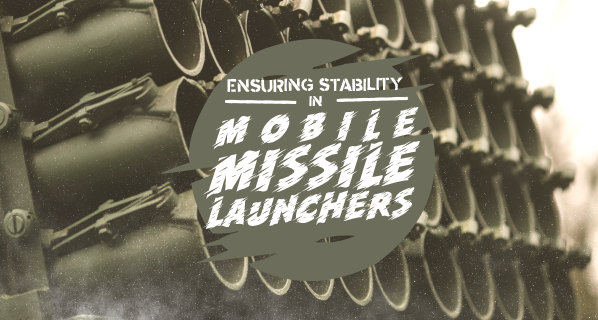WISE UP: The Future of Fluid Power Is Smart
 By Kevin P. Vanderslice, Director of Sales, ifm efector
By Kevin P. Vanderslice, Director of Sales, ifm efector
Digital transformation and Industry 4.0 are common buzz words these days. They focus on real-time data and automation. But how should we approach this?
The manufacturing industry generates more data than any other sector of the economy, and because of all this data, companies are making analytics a priority. In a recent General Electric survey, 42% of manufacturers have said “big data” is the top priority, and another 45% said it is one of the three highest priorities.
Digital transformation is happening in three waves.
Wave 1. The waters that most of us have navigated in recent decades are in wave 1. It is the classic ownership model, i.e., a customer pays a one-time price for a machine or after-sales service. As the OEM, you provide a warranty for a limited amount of time, and any service work beyond that follows the classic model of dispatching a technician or bringing in the vehicle for maintenance or repairs.
Wave 2. In wave 2’s usage-based model, a customer pays to use a machine but does not own it. Uptime becomes more critical. The customer simply may not pay you if the machine is not performing 100%. Insight into the machine’s operation to detect early wear and tear becomes a necessity. With that information, you can plan maintenance and repairs during scheduled downtime.
Wave 3. In this final stage, wave 3 evinces an outcome-based model in which the customer pays only for the finished product. Frankly, he could care less which machine you used to get there. But as you are responsible for the final product, so a full understanding of machine health and product quality is critical. The classic consumer example of this third wave is the ride-sharing service Uber. Suddenly, owning a car is not necessary; getting from A to B is all that matters, which also testifies to the impact that Uber’s transformation has had on the automotive industry.
 How does digital transformation apply to industry?
How does digital transformation apply to industry?
Here are some examples.
1. Aircraft deicers at airports have a serious impact on airline operations. To avoid bottlenecks, stops to refill trucks with the deicing fluid are staggered. This requires a real-time view of current liquid levels in each truck. Additionally, tracking the usage per aircraft may be mandated by the FAA.
2. Refuse collection vehicles are constrained by weight and cycle time. Improving the speed of pickups and optimizing capacity enables trucks to pick up more refuse in less time. This is only possible by accurately measuring key body data and preventing unplanned maintenance.
3. Mobile drill rigs are a good
example of highly complex on/off
highway vehicles that utilize a large number of sensors and actuators. The operator must manage the drill
operation as well as the safety zone of the drill head. Using area surveillance to assist the operator with these tasks and display the parameters in the cab significantly improves the working conditions and safety of the job site.
4. What if farm equipment automatically identified weeds or pests and eradicated them? Besides efficiency and cost reductions, the decreased use of crop-protection chemicals and reduced emissions into the environment show the advantages of this technology, which could ultimately eradicate harmful substances from farming.
5. The traffic of cargo vessels in ports is tightly scheduled. There is little time to load or unload cargo. Automated guided vehicles have simplified and quickened the transportation of containers by knowing where and when to pick up the freight. Automated machines are helping the fast-growing needs of the ship-to-shore industry.
The smart factory
Industry 4.0 is often referred to as the fourth industrial revolution and represents a new stage in the organization and control of the industrial value chain. In manufacturing, Industry 4.0’s modern control systems and smart sensors have resulted in what is often called the “smart factory.” IoT devices in smart factories lead to higher productivity and improved quality. With minimal investment, quality-control personnel can monitor manufacturing processes from virtually anywhere by connecting a smartphone to the cloud. By applying machine learning algorithms, manufacturers can detect errors immediately, rather than at later stages when repair work is more expensive.
 In the industrial world, while Industry 4.0 is influencing overall equipment effectiveness, there are multiple areas where there could be improvement, including:
In the industrial world, while Industry 4.0 is influencing overall equipment effectiveness, there are multiple areas where there could be improvement, including:
- Machine availability – reducing planned and unplanned stoppages.
- Machine performance – eliminating slow cycles and small stops.
- Product quality – reducing levels of scrap, defects, and rework.
- Energy optimization – preventing air or vapor leaks.
- Environmental impact – improving pollution control.
Let’s look at two examples.
Air compressor
- Machine availability. Vibration sensors monitor the pump health to prevent catastrophic failure and loss of availability. You can monitor five key areas of machine problems: impact, fatigue, friction, severity, and temperature. Monitoring this data in real time allows the sensors to predict pending failures and limit catastrophic damage.
- Machine performance. Compressed air leaks cause compressors to work harder and produce more air than needed. Flowmeters reliably measure compressed air flow, pressure, temperature, and total consumption, alerting users to leaks that reduce compressor performance.
- Product quality. Using sensing elements that measure accurately, users can attain precise control of the compressed air system, maintaining quality.
- Energy optimization. Vibration analysis sensors allow for monitoring compressor performance and provide alerts when pumps are operating inefficiently and wasting energy.
- Hydraulic power unit
- Machine availability. Particulate contamination in hydraulic oil can lead to sticking or accelerated mechanical wear of system components. Reliable oil-cleanliness sensors can measure particle size and distribution and alert users before the particle contamination reaches a critical level.
- Machine performance. As a hydraulic pump wears over time, more hydraulic oil leaks past the pump seals to the case drain. Flowmeters can reliably measure the flow of case drain oil, providing real-time feedback on diminishing pump performance.
- Product quality. Over time, water can get into a hydraulic system, causing corrosion, increasing oxidation, and leading to the inaccurate position of system components like valves. Humidity sensors can monitor the level of moisture in hydraulic oil and alert users when it reaches a critical level. This eliminates improper positioning of hydraulic devices, ensuring quality output.
- Energy optimization. Vibration sensors monitor pump performance and provide alerts when pumps are operating inefficiently, wasting energy.
- Environmental impact. Without accurate sensing technology, false levels may fail to indicate overflowing hydraulic oil that can potentially impact the environment. Capacitive point level technology with no moving parts can provide reliable detection of overflow conditions.
What does the future look like?
Consider some predictions.
- With real-time maintenance, data from machine sensors predicts which maintenance activities should be performed on the machine and when. This can be as simple as time-based maintenance decisions or as complex as using powerful analytical models to predict component wear and tear.
- Instead of operator fatigue being measured in hours of work or jobs completed, performance is measured based on operator alertness with the assistance of camera technology.
- An operator score card allows for increased safety, efficiency, a drop in insurance rates, and should, at the same time, increase overall job satisfaction.
- Tracking technology verifies that the correct tool is used for its purpose and location. Additionally, it ensures that expensive assets are not left on the job site and that the machine with the proper tools is deployed to a job site.
- Real-time diagnostics eliminate the need to deploy service technicians with laptops. Instead, critical data empowers an operator or engineer to evaluate, analyze, and troubleshoot problems.
- Making history
Digital transformation allows machine builders to reimagine how they design, manufacture, and service equipment. While Industry 4.0 is still evolving, companies that are currently adopting new technologies realize its potential. These companies upskill their workforce to take on the responsibilities made possible by IoT, and they recruit new employees with the right skills.
We might not have the complete picture until we look back in 30 years. But for now, we’re making history!







